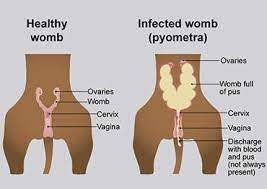As pets age they can suffer cognitive dysfunction. And though there will never come a time when pups or kitty forgets where he left his keys, he might withdraw from his family, become disoriented in his home, cry for no reason, or have sleeping problems. As with humans, the exact cause of cognitive dysfunction is unknown, though it is related to aging and changes in the brain. Sadly, there is no cure, and the problem is progressive. There are medications for dogs that can help, but so far no medication has been approved for cats.
Overview
Most people are familiar with terms like Alzheimer’s disease or senility when it comes to humans. It should come as no surprise, then, that geriatric dogs and cats can develop a very similar condition known as cognitive dysfunction (CD).
Researchers are still trying to understand all the changes that occur in the brains of pets with CD, but studies have determined that deposits of a protein called beta-amyloid play a role. These deposits have an adverse affect on brain function. Interestingly, research on Alzheimer’s disease in humans has reported similar findings.
The exact prevalence of CD in dogs and cats is not well documented. However, evidence suggests that the disease becomes more common as pets age. In one study, CD affected 47 percent of dogs ages 11 to 12 years old and 86 percent of dogs ages 15 to 16 years old.
Symptoms and Identification
Some of the subtle clinical signs of CD can be difficult to distinguish from regular signs of aging. These include things like slowing down and becoming less active. However, dogs and cats with CD also exhibit other signs, including:
House soiling (“forgetting” how to use the litterbox or eliminating outside the box for cats)
Decreased activity
Decreased attention
Disorientation
Pacing
Vocalization (often for no reason)
Staring (sometimes at walls)
Changes in sleep cycles (wandering at night)
Withdrawing from interactions with family members
Anxiety
Some pets can seem to not know family members and even exhibit aggressive behavior toward other pets or members of the household, as if they are strangers. Pet owners may also report that a pet has forgotten tricks, behaviors, and regular routines that were well established earlier in life.
Veterinarians typically begin the diagnostic process for CD by reviewing a pet’s medical history. Valuable information can include the duration of the observed abnormalities, the severity of the problem, and whether the problem seems to be getting worse over time.
The most important aspect of diagnosing CD is to rule out other medical problems that can cause similar clinical signs. For example, an elderly cat that starts soiling outside the litterbox may have another illness such as a bladder infection, diabetes, thyroid disease, or kidney problem. All of these conditions can cause increased frequency of urination. Similarly, a cat that has arthritis may have difficulty getting into and out of the litterbox and therefore becomes reluctant to use it.
Senior pets can also begin to lose their vision and hearing, which may affect how they interact and respond to family members and which will often lead to an increased sense of disorientation. Your veterinarian may recommend a variety of diagnostic tests to rule out other medical issues before making a diagnosis of CD.
Preliminary tests may include the following:
Blood tests, including a chemistry panel and complete blood cell count (CBC)
Urinalysis and urine culture testing to evaluate kidney function and look for evidence of kidney or bladder infection
Radiographs (X-rays) to look for evidence of arthritis and to check for cancer or other changes involving organs in the abdomen or chest
Abdominal ultrasonography
Specific blood tests to evaluate thyroid function and look for other medical conditions
Neurologists are sometimes tapped to help ascertain whether brain tumors or other central nervous system changes are afoot.
Affected Breeds
No known breed predisposition is reported for either dogs or cats.
Treatment
Though there is no cure for CD, treatment may help improve the signs and slow the progression of the disease. Depending on the severity of the clinical signs, there are medications that can help dogs with CD, but there is currently no approved medication for cats with the condition. There is a diet that can help dogs with CD, and nutritional supplements may also help manage the problem in cats as well as dogs. Fatty acids, in particular omega 3 and omega 6 fatty acids, have been shown to have some effect on dogs who suffer cognitive decline.
There is no single medication that can help all pets with CD. However, it has been shown that exercise and routine mental stimulation can help slow the progression of CD. Regular exercise that is appropriate for an older pet, combined with environmental enrichment with toys and play, may help keep pets more alert as they age. Adhering to a strict schedule can also be helpful for some pets as it may help alleviate anxiety.
If the problem becomes too severe and issues such as house soiling, aggression, and immobility effect a poor quality of life, euthanasia can be a reasonable option to discuss. Veterinarians can be invaluable in helping families sort out these issues and come to terms with this end-of-life scenario.
Prevention
There is no known means of prevention save keeping pets in excellent physical condition with plenty of exercise and mental stimulation as they head into their geriatric years.




